When I was in high school, a friend of mine taught me the basics of DIY screenprinting. It takes a little bit of time, but has come in handy a bunch of times over the years. I made shirts for friends, my band, my brother’s tennis team, and a bunch for fun. The method  I use is called the screen filler method. You can read about other screen printing methods here.
This Halloween, I wanted to make some easy costumes for my dogs to go along with my family’s Parks and Recreation themed costumes (Pawnee Goddess costume, Pawnee Ranger costume). The part of the Pawnee Rangers episode I have yet to explore this Halloween is the treat yo’self subplot. I decided to make my pups a couple of trick or treat yo’self t-shirts. In the past, I’ve tried to make them costumes they’ll actually be comfortable in, but it turns out they’re basically intolerant of clothing of any kind, other than t-shirts.
Supplies
t-shirt in the appropriate size
screenprinting ink (Speedball is the brand that’s most available at stores like Michaels)
screen printing frame (again, Speedball is the brand I use)
screen filler (yep, Speedball)
screen printing squeegee
pencil
rags that you’re ok with staining
something to protect your work surface
bright desk lamp
hair dryer
one large and one small paint brush
cardboard large enough to fill most of the inside of your shirt
Directions
Draw your design directly on the screen printing frame. If the direction of the design on the shirt matters (like if you’re including words), write it on the side shown below.
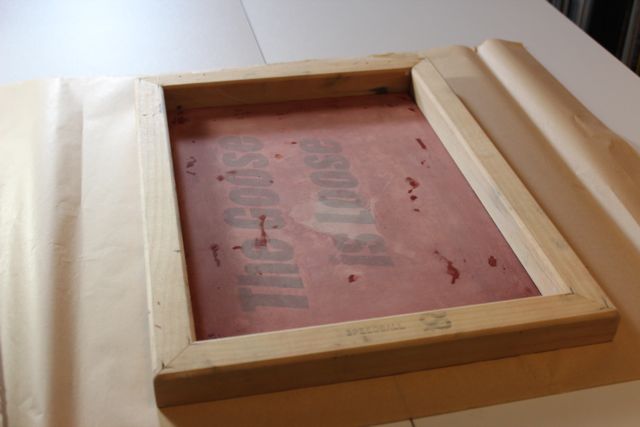
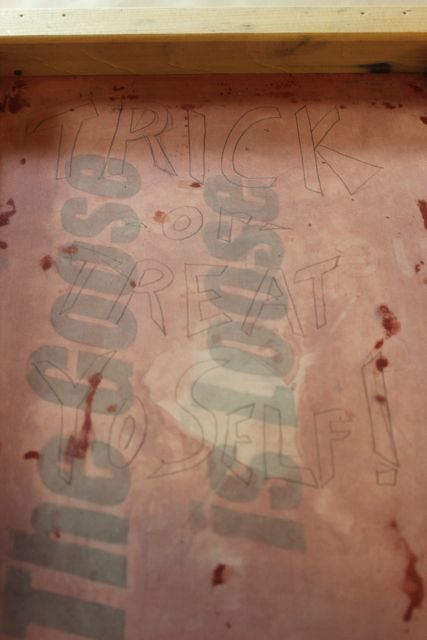
Flip the screen over and trace the design on to the other side of the screen. This is the side you’ll be applying screen filler to, so you’ll need the design to be discernible on it.
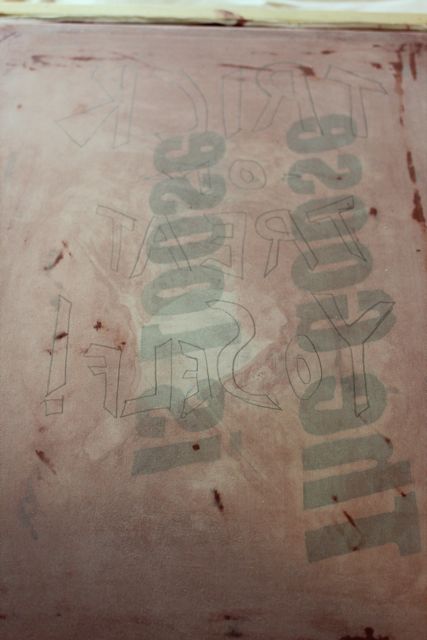
Apply screen filler to everywhere on the screen you don’t want ink to seep through on to your t-shirt. You’re basically creating a stencil. Screen filler fills all of the holes in the screen to keep the ink from going through.
I find it works best to apply screen filler to the big areas of the screen using a large paint brush first. Then, take a smaller paint brush to paint up to the edges of your design.
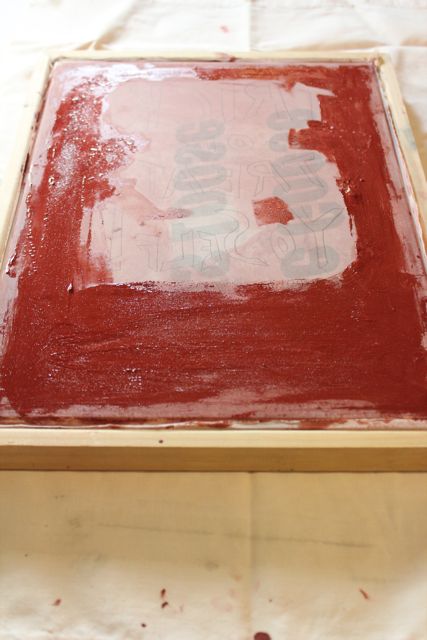
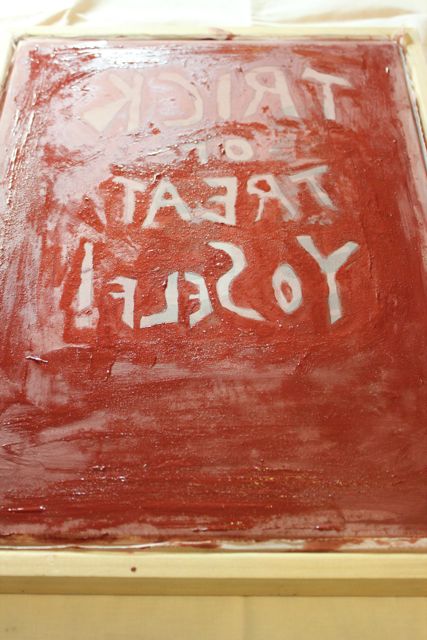
Let your ink dry naturally, or use a hair dryer to speed up the process.
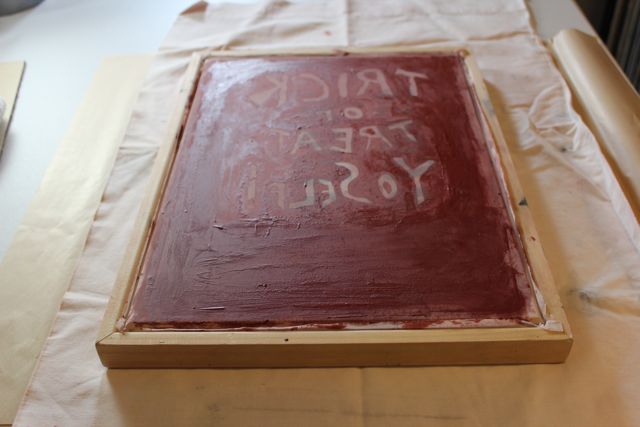
Hold your dried screen up to the light. If you can see little dots of light, ink can get through. I also find that getting straight or solid edges on my design takes a couple rounds of screen filling to get right.
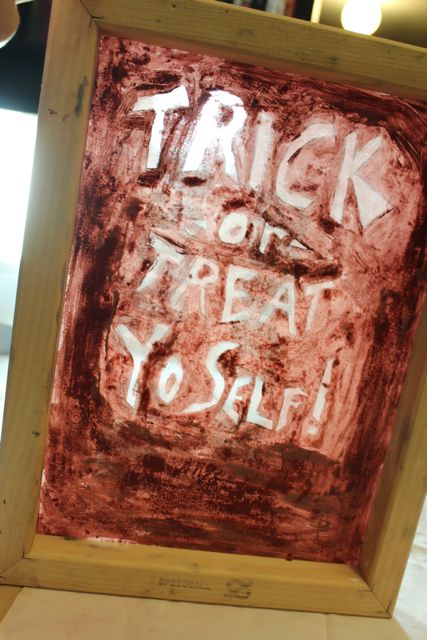
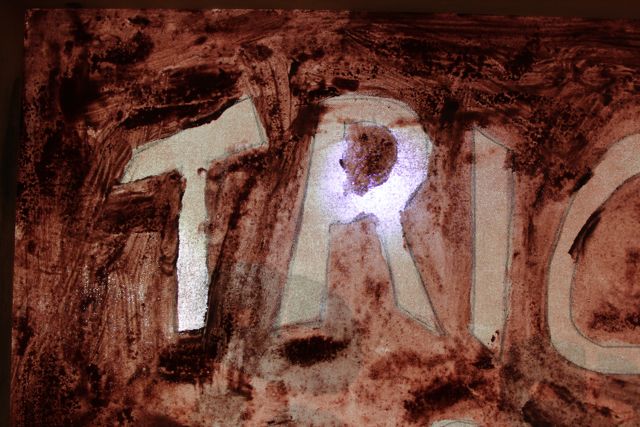
Once you’re confident the screen is all set, you’re ready to print. You can even use an old rag or scrap of fabric to test the accuracy of your stencil before attempting to ink your official shirt.
Lay your shirt out on your work surface, which is protected with a rag or newspaper. Grab a piece of cardboard and put it inside your shirt to protect the far side of it from ink bleed. Straighten your shirt fabric over the cardboard.
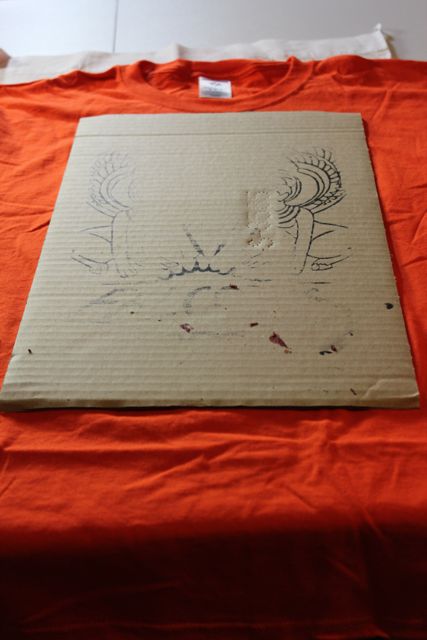
Place one end of your screen at the top of your shirt, as shown. Use your desk lamp to cast a shadow down on the shirt, giving you an idea of how the design will look once it’s printed on the shirt. Try to make it as straight as possible.
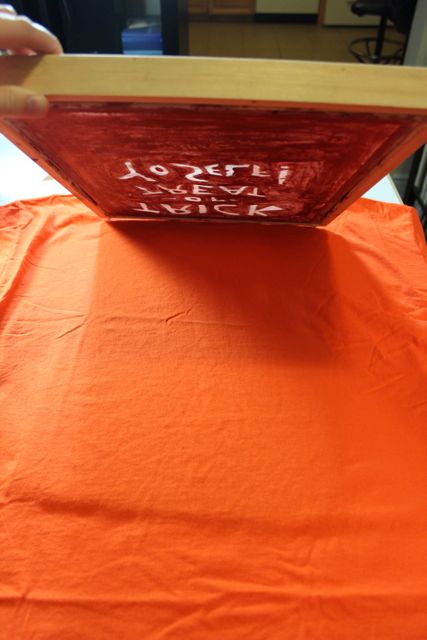
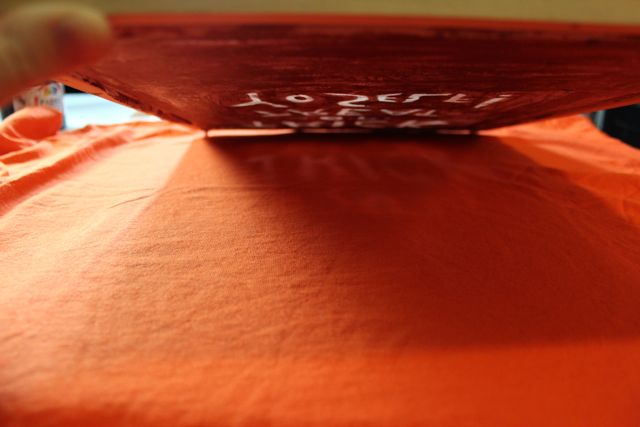
Grab your screen printing ink and squeegee. Paint ink (not too much!) over the openings in your stencil. Brace the frame in place by pressing down with your forearm on the wood part of it. Using the squeegee, wipe back and forth, up and down across the screen while pressing down.
A couple tips:
- If you apply too much ink to the screen, it can more easily bleed past the stencil when you squeegee it through.
- Be careful to hold the screen in ONE place. If your stencil shifts, your shirt will get all effed up.
- If you do eff up your shirt, quickly running over to the sink and rinsing it incredibly thoroughly in cold water cleans it. You’ll have to run your shirt through the dryer before trying to print a second time, but your shirt won’t be ruined.
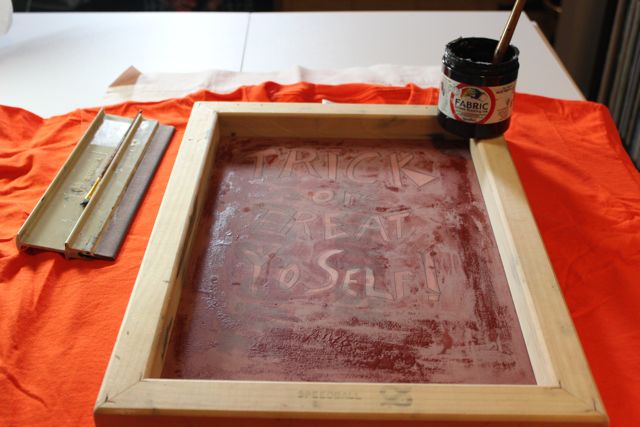

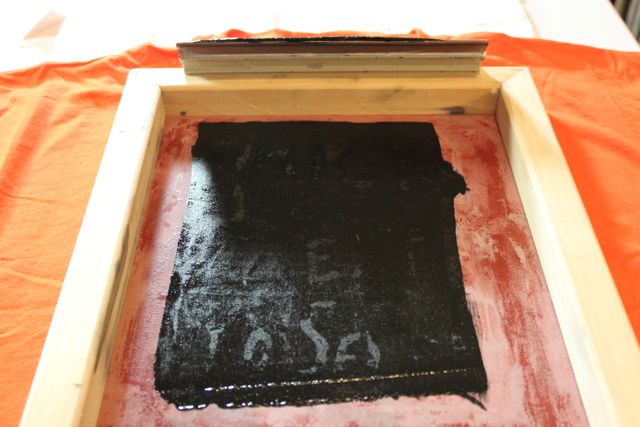
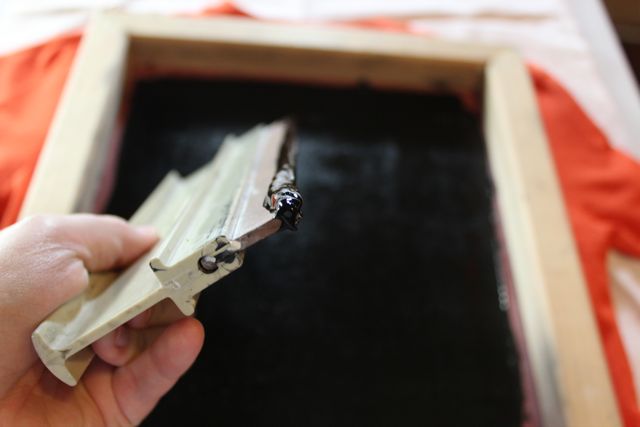
How do you know when you’ve successfully printed the design? As the ink passes through the stencil, you’re able to make out the design by looking closely at the frame. Here’s what it looks like when the ink has gone through (see the “Yâ€):
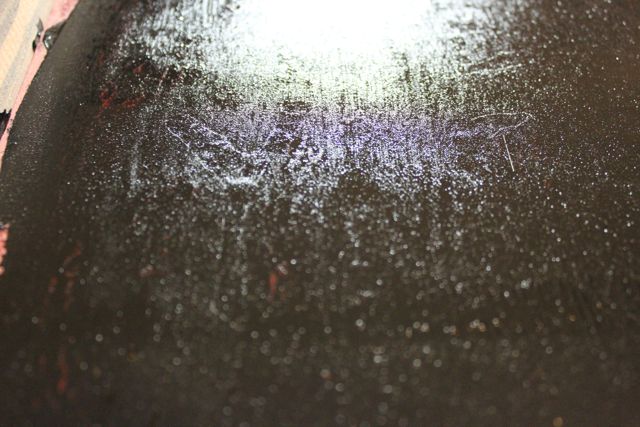
Once you’re confident you’ve squeegeed enough, carefully lift the frame off the shirt. It will stick a little, so make sure to hold the shirt down as you lift the frame. Don’t let the shirt fold. While the ink is still wet, it can stain other parts of the garment.
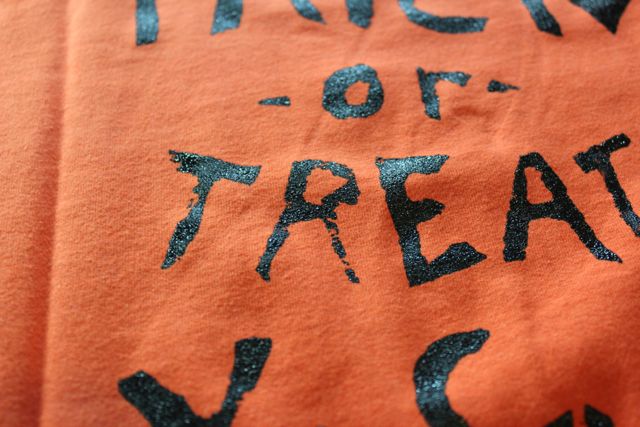
Despite your best efforts, the stencil won’t always perfectly come through. The easy solution is to use a paint brush (and only the tiniest amount of ink) to fill in gaps in your design.
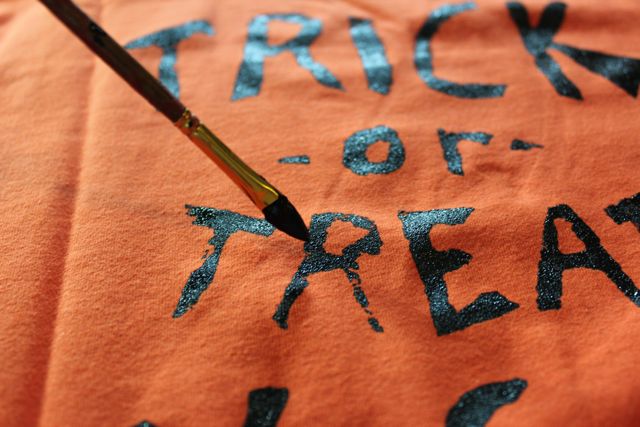
When you’re all set, carefully hang your shirt on a hanger and let it dry overnight. Rinse all of the ink off of your screens using tepid water before the ink dries on them. In my experience, this helps them last longer. Set your screen aside to dry.
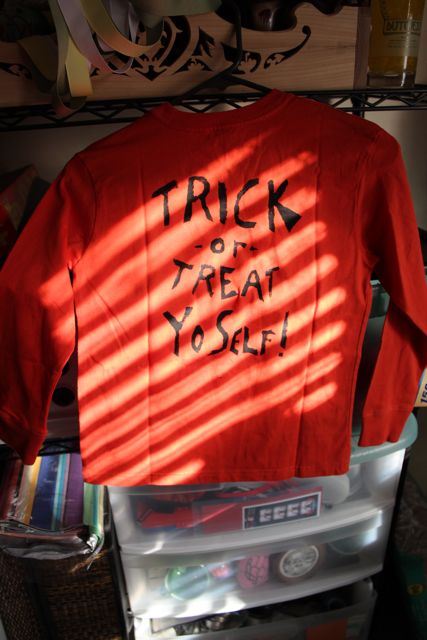
When they’re dry, they’re ready to wear! Check out my cute pooches in their getups. They’re not very good models, but now associate wearing these shirts with getting yummy treats.
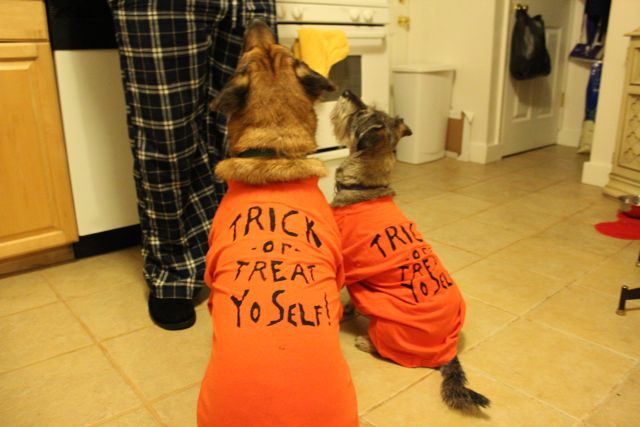
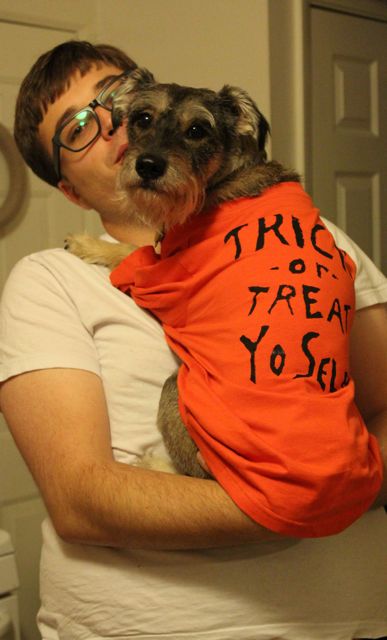
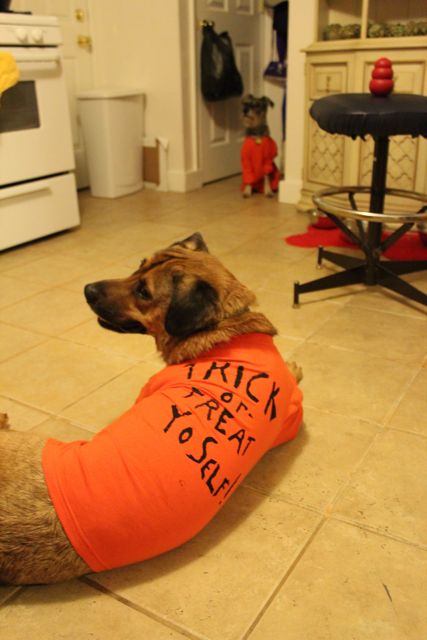
Screen printing supplies aren’t the cheapest things in the world, so remember to clean them after each use.Â






Leave a Reply